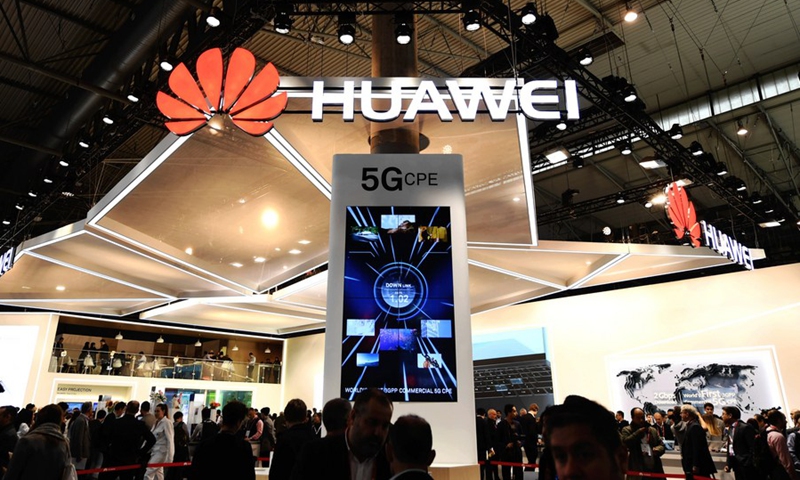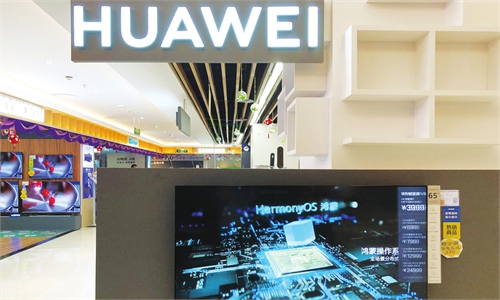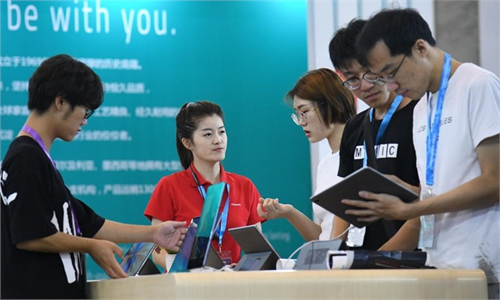
Photo taken on Feb. 26, 2018 shows a screen displaying the 5G technology at the booth of China's telecom giant Huawei during the 2018 Mobile World Congress (MWC) in Barcelona, Spain.(Photo: Xinhua)
Chinese telecommunications giant Huawei is expected to deliver its first flexible OLED driver chip to suppliers by the end of 2021, according to media reports on Monday, in a move that could mark a breakthrough for Huawei to counter the US' chip bans.
The OLED driver chip, which controls the lighting of each pixel in a display, was designed by Huawei's chip arm HiSilicon, industry media outlets reported on Monday, noting that the OLED driver chip uses a 40-nanometer (nm) process technology, which is scheduled for mass production in the first half of 2022.
Sample chips have reportedly been sent to Huawei, Honor and BOE Technology Group, a Chinese flexible panel producer, for testing.
If successfully launched, the move could help Huawei cope with the US' bans that have made it almost impossible to manufacture smartphone processors for its high-end products, leading to losses in market share and smartphone shipments, analysts said.
If OLED chips can't be imported, the production and manufacturing of mobile phones will be affected, Xiang Ligang, director general of the Beijing-based Information Consumption Alliance, told the Global Times on Monday.
Since the US issued chip bans on Huawei, the global foundries have been unable to produce 14-, 7-, 5-nm and other advanced chips for Huawei. The bans also affected Huawei's flexible OLED cooperation with companies like Samsung.
As the OLED driver chip mainly adopts 28-, 40- and 55-nm chips, Huawei has been able to find more foundries to make the chip, as the production process is not as complicated. The self-produced OLED driver chip will be rather lucrative for Huawei, as the chip can be widely used in products such as TVs, screens and cameras, analysts said.
It is expected that 584.5 million smartphone OLED panels will be shipped in 2021, up 28 percent year-on-year. In this segment, China's OLED sector is entering a large-scale competition, and shipments are expected to exceed 100 million pieces for the first time in 2021, bringing huge market opportunities to OLED driver chips, according to research institute Omdia.
OLED driver chip makers in the Chinese mainland can't keep up with domestic demand. If Huawei's HiSilicon enters the market, it would have a chance to share in the fast-growing OLED driver chip market in China, said industry insiders.
"China has the world's most complete industry chain for making chips. Thus, the industry has the capacity to develop and make breakthroughs for any type of chips, without strict limitations," said Xiang, adding that China has been making all-round, diversified efforts to produce chips to solve such bottleneck problems.
The Huawei Kirin 710A chip, based on 14-nm semiconductor technology, went into commercial mass production in May 2020. It was the first purely Chinese chip with independent intellectual property rights.


